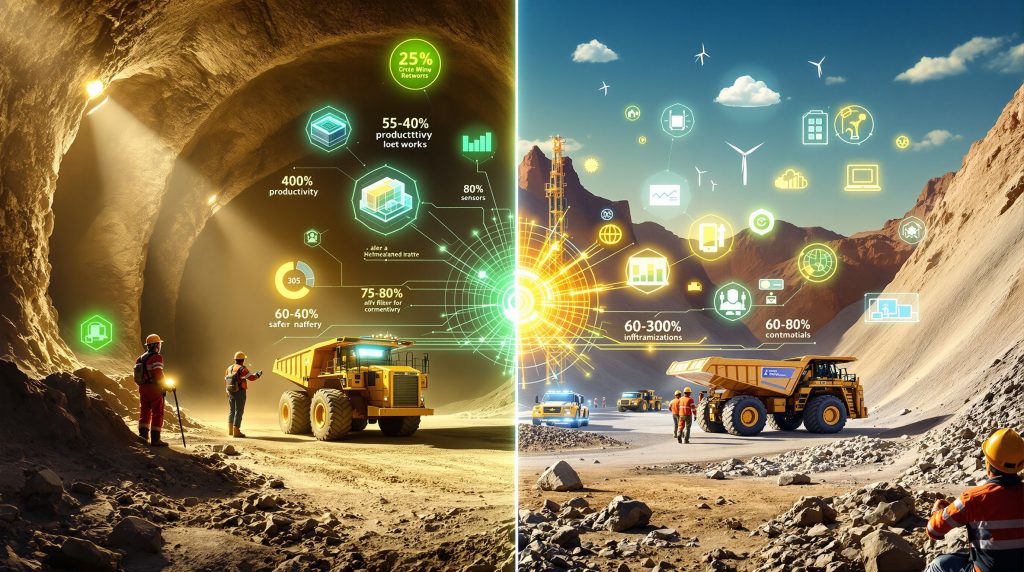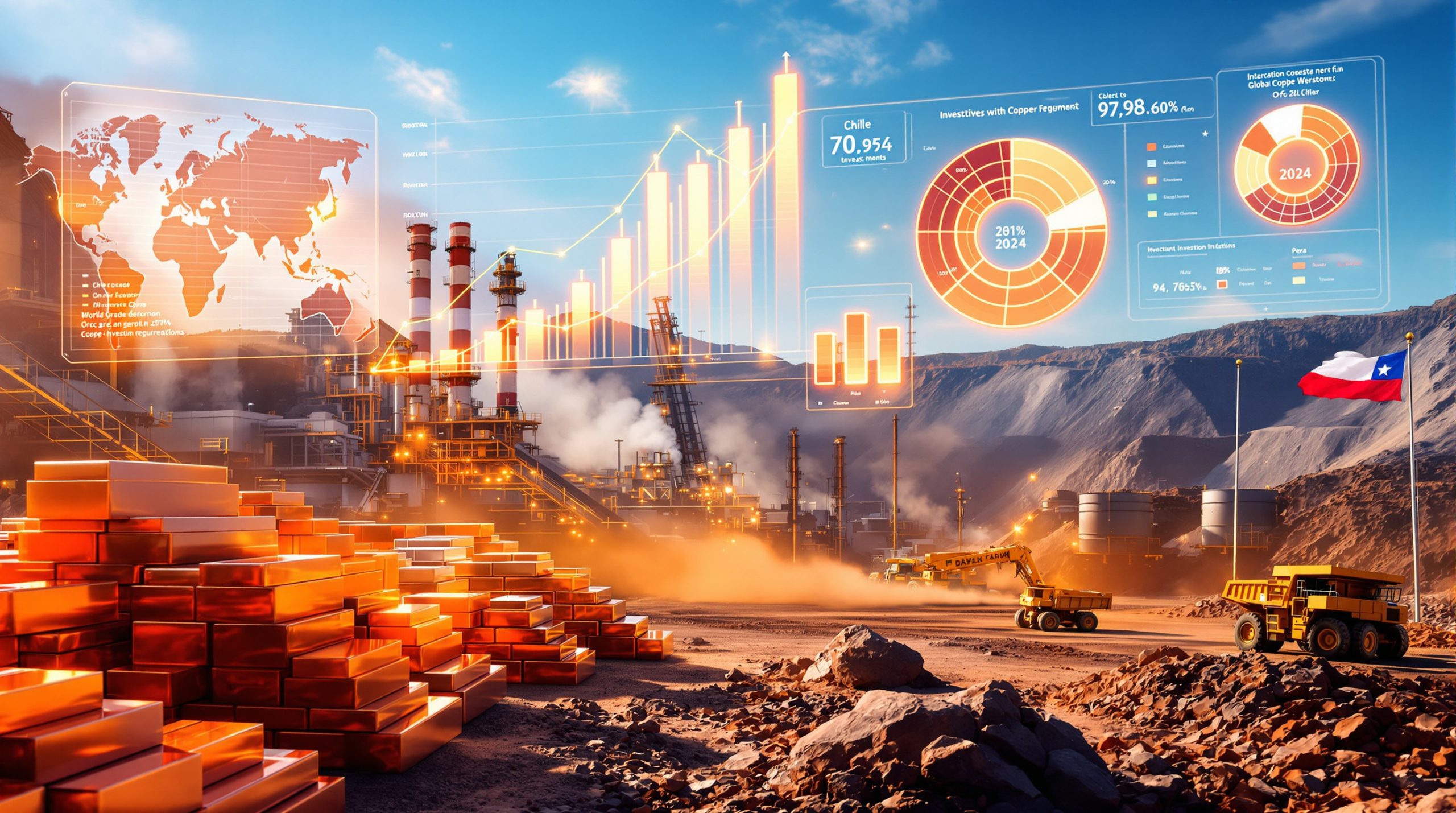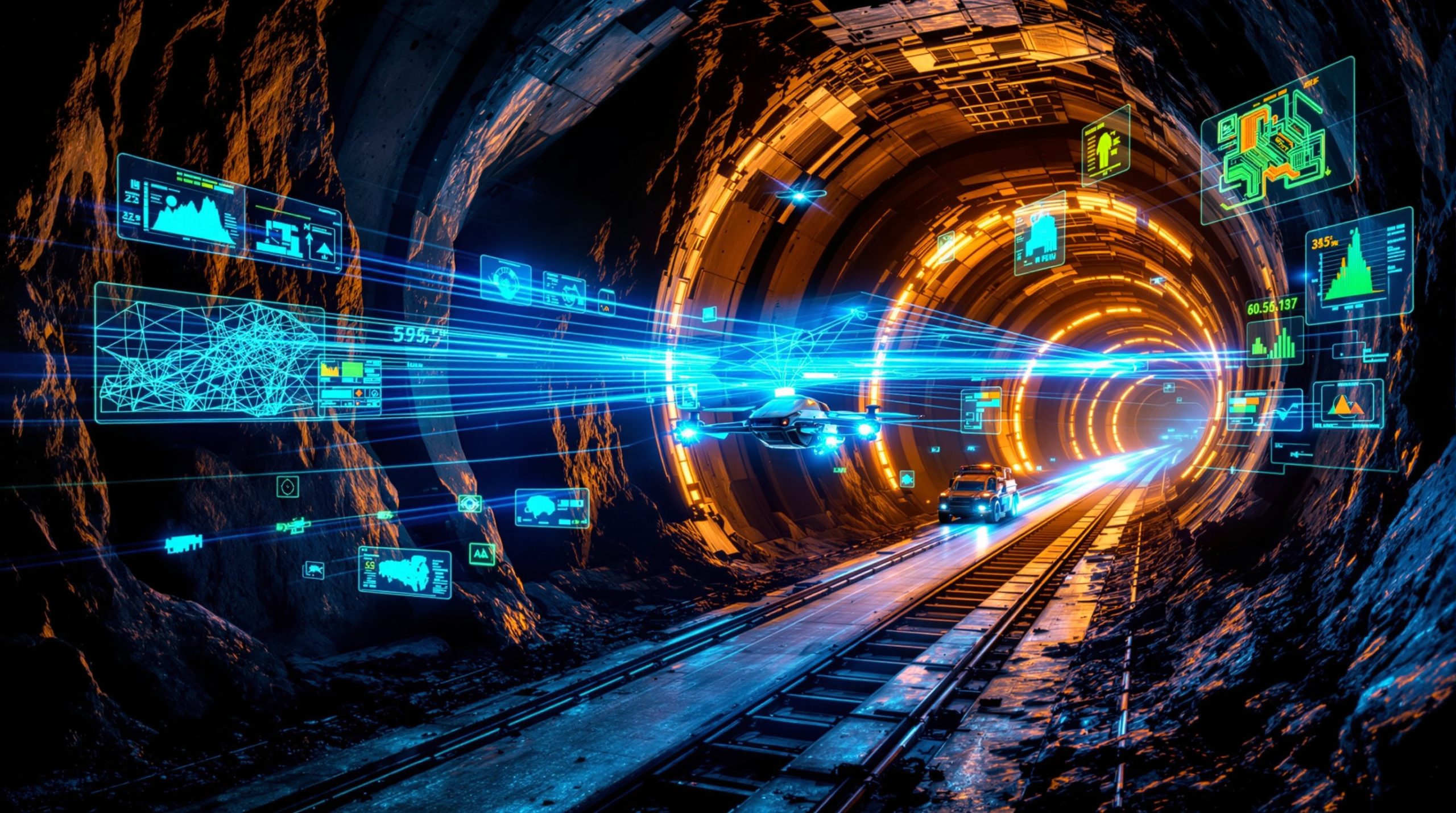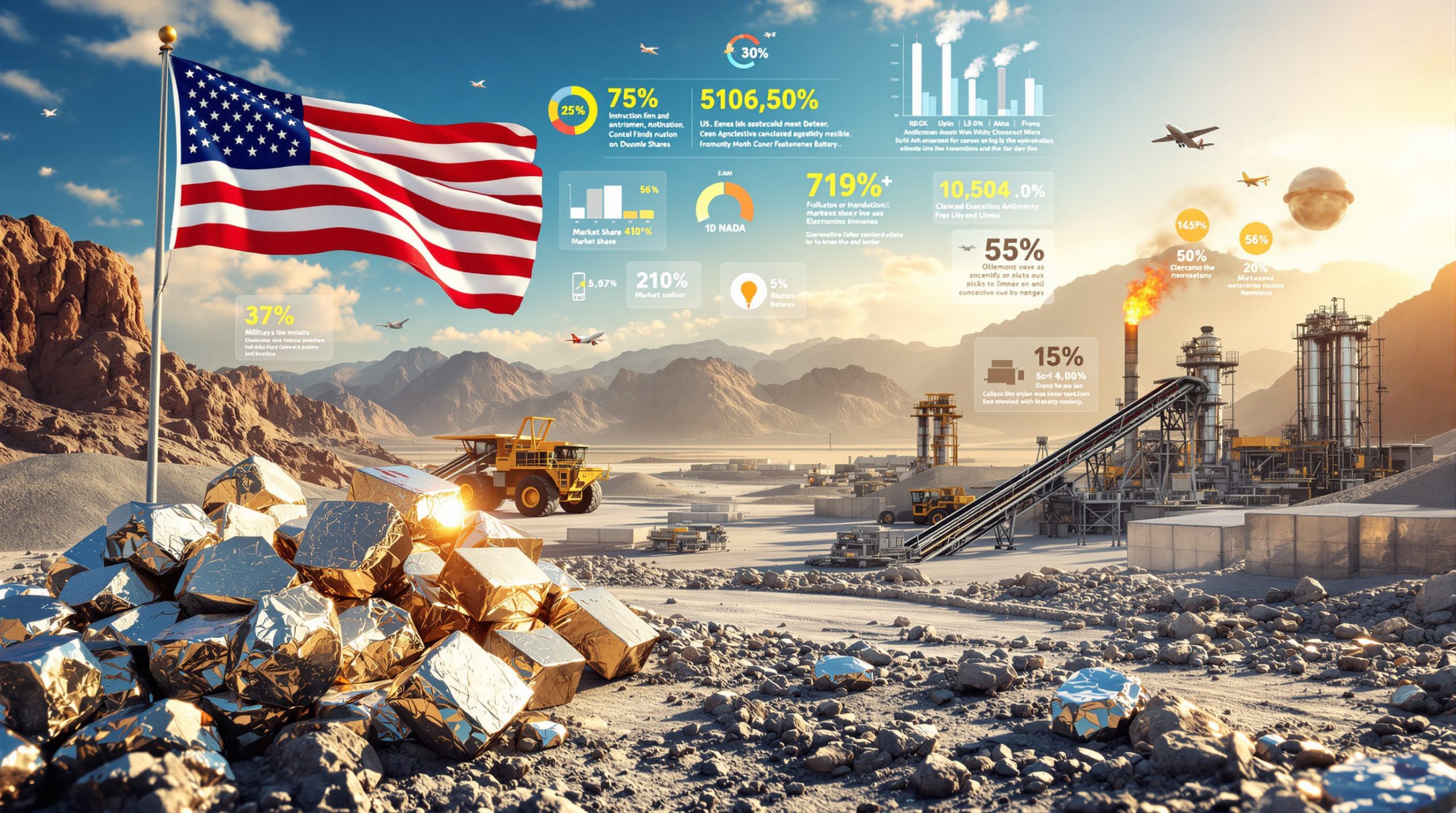The Digital Revolution Transforming Mining Operations
Modern mining engineering evolution represents a fundamental shift from traditional extraction methods toward sophisticated, technology-driven operations that prioritise efficiency, safety, and environmental stewardship. According to McKinsey & Company's 2023 report "Capturing mining's automation opportunity," the mining industry could unlock $373 billion in value through digital transformation and automation by 2035.
This transformation encompasses the integration of advanced automation systems, predictive analytics platforms, and sustainable practices that have redefined industry standards across global mining operations. The global mining automation market was valued at $3.47 billion in 2022 and is projected to reach $5.84 billion by 2030, growing at a CAGR of 6.7% from 2023 to 2030, according to Grand View Research.
Core Elements of Contemporary Mining Operations
Contemporary mining operations integrate multiple technological systems that work synergistically to optimise performance:
- Automated extraction systems replacing manual labour in hazardous underground environments
- Real-time data analytics enabling predictive maintenance and operational optimisation across distributed assets
- Remote monitoring capabilities allowing centralised control of mining equipment from distant operation centres
- Environmental compliance technologies ensuring sustainable resource extraction practices that meet regulatory standards
Furthermore, the U.S. Mine Safety and Health Administration (MSHA) reported that mine fatality rates decreased from 26.9 per 100,000 workers in 2000 to 8.6 per 100,000 workers in 2022, demonstrating the substantial safety improvements achieved through technological advancement.
Automated Systems Driving Operational Excellence
Autonomous haulage systems and robotic equipment have transformed mining productivity metrics across the industry. Rio Tinto reported that its autonomous truck fleet in the Pilbara region of Western Australia has transported more than 4 billion tonnes of materials since 2008, with autonomous trucks demonstrating 15% lower load and haul unit costs compared to conventional operations.
| Technology Category | Productivity Increase | Safety Improvement | Cost Reduction |
|---|---|---|---|
| Autonomous Drilling | 25-35% | 60% fewer incidents | 15-20% operational costs |
| Robotic Loaders | 30-40% | 70% risk reduction | 20-25% labour costs |
| Automated Haul Trucks | 20-30% | 80% fewer accidents | 10-15% fuel costs |
Precision Drilling and Extraction Technologies
Advanced drilling systems utilise GPS positioning and real-time geological analysis to optimise extraction patterns, reducing waste rock generation by up to 40% while maximising ore recovery rates. Moreover, AI in drilling and blasting has shown 30% improvement in drill pattern accuracy and up to 50% reduction in energy consumption per metre drilled compared to manual operations.
These systems integrate seamlessly with mine planning software to execute predetermined extraction sequences with millimetre-level accuracy. Modern drilling platforms incorporate automated rod handling, real-time penetration rate monitoring, and adaptive drilling parameters that respond to changing geological conditions without operator intervention.
Autonomous Vehicle Integration
Self-operating haul trucks and loaders navigate predetermined routes using LiDAR sensors and machine learning algorithms, operating continuously without fatigue-related performance degradation. Modern autonomous mining vehicles utilise multi-sensor fusion technology combining LiDAR, radar, GPS/GNSS with real-time kinematic (RTK) correction, inertial measurement units (IMUs), and computer vision systems to achieve positioning accuracy within 5-10 centimetres.
According to research published in the Journal of Safety Research, autonomous mining equipment implementation has reduced injury rates by 40-60% in operations that have achieved full automation deployment. These systems process thousands of environmental variables per second to maintain optimal speed, fuel efficiency, and cargo protection while navigating complex mining environments.
IoT Integration Creating Connected Mining Ecosystems
Internet of Things implementation creates interconnected mining ecosystems where equipment, environmental sensors, and operational systems communicate continuously to optimise performance parameters. According to a Deloitte survey of global mining companies, 67% of respondents reported deploying IoT sensors across their operations as of 2023, up from 42% in 2020.
This connectivity enables predictive maintenance schedules that prevent equipment failures before they occur, reducing unplanned downtime by 35-50%. Research from the Boston Consulting Group indicates that predictive maintenance programmes utilising IoT data can reduce maintenance costs by 10-40% and decrease downtime by 50%.
Sensor Network Architecture
Modern mining operations deploy comprehensive sensor networks that monitor critical operational parameters:
- Vibration monitors detecting bearing wear and mechanical stress patterns in rotating equipment
- Temperature sensors tracking equipment operating conditions and environmental changes throughout facilities
- Pressure gauges monitoring hydraulic systems and structural integrity of critical infrastructure
- Air quality detectors ensuring worker safety and regulatory compliance in underground environments
In addition, modern mining IoT networks utilise a combination of technologies including 5G private networks, LoRaWAN for long-range low-power sensors, Wi-Fi 6 for high-bandwidth applications, and mesh networking protocols to ensure coverage in challenging underground and remote environments.
Predictive Maintenance Capabilities
Machine learning algorithms analyse sensor data patterns to identify potential equipment failures weeks before they manifest, allowing maintenance teams to schedule repairs during planned downtime periods. A study in the International Journal of Mining Science and Technology found that IoT-enabled predictive maintenance increased equipment availability from an industry average of 85% to 92-95% in operations with mature implementations.
Edge computing devices process sensor data locally to reduce latency and bandwidth requirements, with critical information transmitted to centralised cloud platforms for advanced analytics and machine learning model training. This approach extends equipment lifespan by 20-30% while reducing maintenance costs through optimised parts inventory management.
Industry Insight: Leading mining operations report 45% reduction in unexpected equipment failures after implementing comprehensive IoT monitoring systems, translating to millions in saved operational costs annually.
Data Analytics Transforming Decision-Making Processes
Advanced analytics platforms process geological surveys, equipment performance data, and market conditions to optimise extraction strategies in real-time. For instance, data-driven mining operations have shown that 58% of mining companies have implemented advanced analytics platforms for operational optimisation, representing a significant increase from 34% in 2020.
These systems identify previously undetectable patterns in ore distribution, equipment efficiency, and operational bottlenecks that human analysis might overlook. Research published in Natural Resources Research journal indicates that machine learning-enhanced geological modelling has improved ore grade prediction accuracy by 15-25% compared to traditional geostatistical methods.
Geological Data Processing
Sophisticated algorithms analyse core samples, geophysical surveys, and historical extraction data to create three-dimensional ore body models with unprecedented accuracy. Contemporary modern mine planning systems integrate data from drill hole databases, 3D seismic surveys, hyperspectral imaging, and historical production records using geostatistical kriging algorithms and machine learning models to create probabilistic ore body models.
These models guide extraction planning to maximise resource recovery whilst minimising environmental disturbance and operational costs. According to research from the Colorado School of Mines, modern mining operations are shifting from reactive to proactive management through real-time analytics that enable operators to identify and respond to operational deviations within minutes rather than hours or days.
Operational Intelligence Systems
Real-time dashboards consolidate information from hundreds of data sources to provide mine managers with comprehensive operational visibility. The World Economic Forum's Mining and Metals Industry report states that mining operations using integrated analytics platforms report 8-12% improvements in overall equipment effectiveness (OEE).
These systems track production metrics, equipment status, environmental conditions, and safety parameters simultaneously, enabling rapid response to changing conditions. Advanced visualisation tools present complex data relationships through interactive dashboards that highlight critical performance indicators and trending patterns across multiple operational domains.
Environmental Innovations Defining Sustainable Mining
Modern mining operations integrate renewable energy systems, water recycling technologies, and advanced waste management practices to minimise environmental impact whilst maintaining operational efficiency. However, the mining sustainability transformation indicates that renewable energy capacity in mining operations grew by 15% annually between 2020 and 2023, with solar and wind installations at mine sites reaching 2.3 GW globally by end of 2023.
These innovations respond to increasing regulatory requirements and stakeholder expectations for responsible resource extraction. The Mining Association of Canada reports that its members reduced greenhouse gas emissions intensity by 29% between 2000 and 2022, despite increased production volumes.
Energy Efficiency Technologies
Mining operations are implementing comprehensive energy management systems that integrate multiple clean energy sources:
- Solar and wind power integration reducing reliance on fossil fuels by 40-60% in suitable locations
- Energy storage systems providing consistent power during variable renewable generation periods
- Electric vehicle fleets eliminating diesel emissions in underground operations and surface facilities
- Heat recovery systems capturing waste energy for facility heating and mineral processing applications
According to Roskill Information Services, battery-electric and hydrogen fuel cell mining equipment sales are projected to grow from approximately 200 units in 2022 to over 2,500 units by 2030, indicating rapid adoption of clean propulsion technologies.
Water Management Systems
Closed-loop water recycling systems treat and reuse process water, reducing fresh water consumption by 70-80% compared to traditional operations. Research from the International Council on Mining and Metals (ICMM) shows that member companies improved water recycling rates from 50% in 2018 to 64% in 2022, with leading operations achieving recycling rates above 85%.
Advanced filtration and treatment technologies remove contaminants to levels suitable for reuse in mineral processing and dust suppression applications. Furthermore, filtered tailings technology removes 80-90% of water from tailings before deposition, creating a paste-like material that can be stacked without containment dams, significantly reducing catastrophic failure risks and water consumption.
| Innovation Area | Traditional Impact | Modern Technology Impact | Improvement |
|---|---|---|---|
| Water Usage | 100% fresh water | 20-30% fresh water | 70-80% reduction |
| Energy Consumption | 100% fossil fuels | 40-60% renewable | 40-60% cleaner energy |
| Waste Generation | Standard tailings | Filtered/dry stacking | 50-70% volume reduction |
Remote Operations Enhancing Safety and Efficiency
Remote control centres enable operators to manage multiple mining sites from centralised locations, reducing personnel exposure to hazardous environments whilst improving operational coordination. Research from GlobalData indicates that the number of integrated remote operation centres (IROCs) in the mining industry grew from approximately 45 in 2018 to over 120 by 2023.
These facilities utilise high-definition cameras, sensor networks, and communication systems to maintain real-time situational awareness across distributed operations. Rio Tinto's Operations Centre in Perth, which remotely controls mines across Western Australia, has reduced personnel exposure to high-risk environments by 80% since its establishment.
Control Centre Technologies
Advanced control rooms feature multiple display walls showing equipment status, environmental conditions, and production metrics from various mining locations. Modern remote operation centres utilise high-definition cameras (1080p minimum) with frame rates of 30-60 fps, equipped with pan-tilt-zoom (PTZ) capabilities and low-light performance specifications suitable for underground environments.
Operators use joystick controls and touch interfaces to direct autonomous equipment, adjust processing parameters, and respond to operational alerts without physical presence at mining sites. Consequently, remote operations centres managing multiple sites report 12-18% improvements in fleet utilisation through optimised scheduling and coordinated resource allocation.
Communication Infrastructure
Fibre optic networks and wireless communication systems provide redundant connectivity between remote operations and control centres, ensuring continuous operational oversight. Effective remote operation of mining equipment requires end-to-end communication latency below 100 milliseconds for real-time control, with critical safety systems requiring sub-50ms response times.
These systems maintain low-latency connections essential for real-time equipment control and emergency response coordination. According to the Australia Minerals Council, remote operations are enabling mining companies to attract and retain talent by offering opportunities to work in technology-focused roles in urban centres rather than requiring relocation to remote mine sites.
Emerging Technologies Shaping Future Mining
Artificial intelligence, augmented reality, and blockchain technologies represent the next frontier in mining engineering evolution, promising further improvements in operational efficiency, safety, and transparency. According to S&P Global Market Intelligence, venture capital and corporate investment in AI applications for mining reached $1.2 billion in 2023, a 45% increase from 2022.
These innovations build upon existing automation and connectivity foundations to create more intelligent and responsive mining operations. The augmented and virtual reality market for mining applications is projected to grow from $178 million in 2023 to $492 million by 2028, representing a CAGR of 22.5%.
Artificial Intelligence Applications
AI systems analyse vast datasets to optimise blasting patterns, predict equipment maintenance needs, and identify new ore deposits through pattern recognition in geological data. Moreover, research from the University of British Columbia's Norman B. Keevil Institute of Mining Engineering indicates that AI-powered efficiency boost systems are being developed to optimise blasting patterns by analysing rock fragmentation data, with early implementations showing 10-15% improvements in downstream processing efficiency.
Machine learning algorithms continuously improve their accuracy as they process more operational data, becoming increasingly effective at predicting and preventing operational issues. The Canadian Institute of Mining, Metallurgy and Petroleum (CIM) reports that computer vision systems utilising deep learning algorithms can now identify ore types and quality characteristics with 95%+ accuracy, enabling automated sorting and grade control.
Augmented Reality Integration
AR headsets provide maintenance technicians with overlay information showing equipment schematics, repair procedures, and safety warnings directly in their field of view. AR systems for mining equipment maintenance overlay 3D models, component specifications, work instructions, and diagnostic information onto the technician's field of view through head-mounted displays or tablets, with positioning accuracy within 2-5 centimetres achieved through visual simultaneous localisation and mapping (SLAM) technology.
This technology reduces training time for complex procedures whilst improving maintenance accuracy and worker safety in challenging environments. Additionally, advanced AR applications enable remote expert assistance, allowing experienced technicians to guide on-site personnel through complex repairs using real-time video and augmented instructions.
Blockchain Supply Chain Management
Distributed ledger technology creates immutable records of mineral extraction, processing, and transportation, ensuring compliance with ethical sourcing requirements and environmental regulations. Several pilot projects are implementing blockchain distributed ledger technology to create immutable records tracking minerals from extraction through processing and delivery, with platforms utilising permissioned blockchain architectures such as Hyperledger Fabric.
This transparency builds stakeholder confidence whilst combating illegal mining activities and fraudulent practices. In addition, blockchain implementations enable mining companies to verify compliance with ethical sourcing standards, providing consumers and stakeholders with verifiable proof of responsible mineral extraction and processing practices.
Modern Mining Success Measurement
Contemporary mining engineering evolution success metrics extend beyond traditional production volumes to encompass safety performance, environmental compliance, energy efficiency, and operational sustainability. According to ICMM member company data, the total recordable injury frequency rate (TRIFR) improved from 3.42 per million hours worked in 2018 to 2.58 in 2022.
These comprehensive performance indicators reflect the industry's evolution toward responsible resource extraction practices. The Global Reporting Initiative (GRI) indicates that 89% of the world's largest mining companies now publish annual sustainability reports aligned with international frameworks.
Key Performance Indicators
Modern mining operations track multiple interconnected performance metrics:
- Zero harm safety targets measuring incident-free operational days and near-miss reporting frequencies
- Carbon footprint reduction tracking progress toward net-zero emissions goals across operational scopes
- Water recycling efficiency monitoring closed-loop system performance and consumption reduction rates
- Equipment utilisation rates optimising asset productivity and lifecycle costs through predictive maintenance
Industry benchmarking data from Mining3 shows that world-class mining operations achieve OEE scores of 85-90%, compared to industry averages of 55-65%, demonstrating the performance potential of integrated technology implementations.
Continuous Improvement Frameworks
Mining operations implement systematic improvement processes that analyse performance data to identify optimisation opportunities. The Society for Mining, Metallurgy & Exploration emphasises that leading mining operations have moved beyond siloed performance metrics to integrated dashboards that balance production, safety, environmental, and financial indicators in real-time.
These frameworks integrate feedback from automated systems, operational personnel, and environmental monitoring to drive ongoing enhancements in efficiency and sustainability. Mining operations calculate greenhouse gas emissions following protocols established by the Greenhouse Gas Protocol, measuring Scope 1 (direct emissions), Scope 2 (purchased electricity), and increasingly Scope 3 (value chain emissions) using internationally recognised conversion factors.
Innovation Drivers and Future Challenges
Declining ore grades, deeper extraction requirements, and stricter environmental regulations create ongoing pressure for technological advancement in mining engineering evolution. These challenges necessitate continued investment in research and development to maintain operational viability whilst meeting stakeholder expectations.
The industry faces increasing complexity as easily accessible high-grade deposits become exhausted, requiring more sophisticated approaches to resource extraction and processing. Climate change regulations and social licence requirements further complicate operational planning, driving innovation toward more sustainable and transparent mining practices.
Resource Depletion Responses
As easily accessible high-grade deposits become exhausted, mining operations must develop technologies capable of economically extracting lower-grade ores from greater depths. This requires more sophisticated processing techniques, enhanced automation systems, and improved energy efficiency to maintain profitability whilst processing larger volumes of lower-grade material.
Advanced sensor technologies and AI-powered ore sorting systems enable economic processing of previously unviable deposits by precisely separating valuable minerals from waste rock. These systems analyse mineral composition at high speeds, directing valuable material to processing facilities whilst diverting waste to appropriate disposal areas.
Regulatory Adaptation
Evolving environmental and safety regulations drive continuous innovation in monitoring systems, emission controls, and waste management technologies. Mining operations must anticipate regulatory changes and invest in technologies that exceed current requirements to ensure long-term compliance and operational continuity.
Carbon pricing mechanisms and environmental reporting requirements incentivise investment in renewable energy systems, emission reduction technologies, and transparent operational reporting systems. Therefore, leading mining companies are proactively implementing technologies that position them advantageously for future regulatory environments.
The Future of Mining Engineering Excellence
Mining engineering evolution represents a fundamental shift toward intelligent, sustainable, and safe resource extraction that balances operational efficiency with environmental stewardship. The integration of automation, IoT, advanced analytics, and emerging technologies has created mining operations that are safer, more productive, and environmentally responsible than ever before.
This evolution continues as the industry adapts to changing resource availability, regulatory requirements, and stakeholder expectations. Future developments in artificial intelligence, renewable energy integration, and sustainable practices will further enhance the industry's ability to meet global resource demands whilst minimising environmental impact.
The successful mining operations of tomorrow will be those that embrace technological innovation whilst maintaining focus on safety, sustainability, and operational excellence. This balanced approach ensures the industry's continued viability in an increasingly complex and demanding global environment, where mining engineering evolution serves as the foundation for responsible resource extraction.
Disclaimer: This article contains analysis of current trends and future projections in mining technology. Actual performance results may vary based on specific operational conditions, implementation approaches, and market factors. Readers should conduct their own research and consult with industry professionals before making operational or investment decisions.
Ready to Capitalise on Tomorrow's Mining Technology Leaders?
Discovery Alert's proprietary Discovery IQ model identifies breakthrough mineral discoveries from ASX-listed mining companies as they develop and implement cutting-edge technologies like those transforming the industry today. Stay ahead of the market by receiving instant notifications when innovative mining operations announce significant discoveries, turning complex geological data into actionable investment opportunities through Discovery Alert's comprehensive service.




